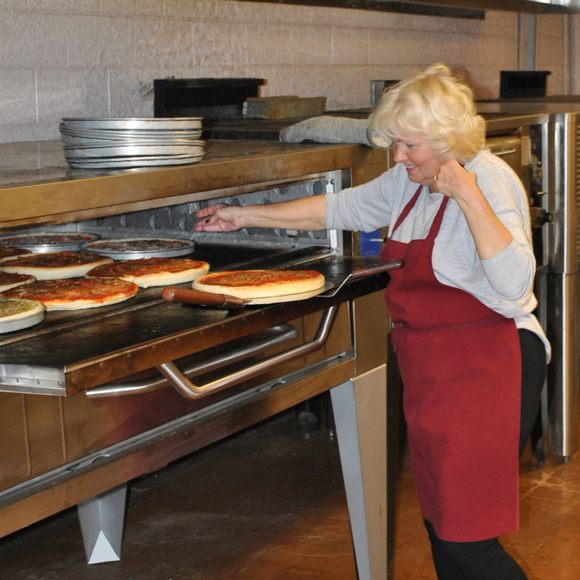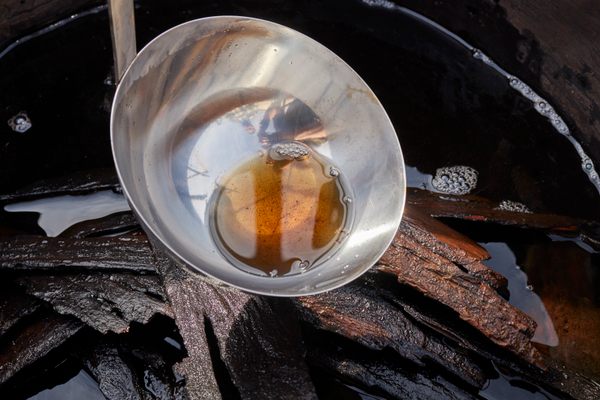It’s before dawn on a Saturday at St. Anthony of Padua Catholic Church in Youngstown, and the smell of red peppers hangs heavy in the air. For decades, a group of volunteers have worked here to keep a beloved tradition alive: making Brier Hill pizzas.
The Brier Hill neighborhood, on the Mahoning River bank in Youngstown, was so named because it was near the location of Ohio governor David Tod’s 19th-century estate, built on a hill that was covered with thorn bushes. Situated on a rich coal seam, Brier Hill became a working-class neighborhood, and by the late 1800s, home to the first Italians to settle in the Mahoning Valley.
With Italian immigrants came Italian food. The city’s neighborhoods usually had communal brick ovens, used to make bread. Whatever dough left over that was too small for a loaf of bread became a pizza, covered with red sauce, peppers and powdered romano cheese—all ingredients that locals had to hand.
It was also served in the St. Anthony school cafeteria on Fridays (in the days before Vatican II, Catholics were forbidden from eating meat on Friday; pizza proved a popular alternative). Then, as restaurants dedicated to pizza popped up, many began to offer Brier Hill’s unique take. But according to the shirts worn by today’s church volunteers, St. Anthony’s own Brier Hill pizza is often imitated but never duplicated.
St. Anthony’s pastor, Msgr. Michael Cariglio, stopped by with his dog Linguine to order his pizzas. According to him, the recipe dates back centuries. Ernie DiRenzo, the retiree who leads the volunteers, isn’t one to doubt the word of a priest. “All I know is my mom made it when I was kid, and everyone else on the street made it too,” he says.
While another school now occupies the St. Anthony facility, the church still uses the ovens, as pizza is their main fundraiser. They used to make it every Friday, taking summers off, but closed down in March 2020 due to COVID-19. They resumed that fall, changing their pizza-making days to Saturdays. But whatever day they make it, the dish remains as popular as ever.
DiRenzo starts taking orders Wednesday, and then he and a group of about 20 volunteers start work at 4:30 a.m. Saturday making dough. After letting the dough rest, they begin portioning it around 6 a.m. Baking starts around 7:30 a.m.. The ovens at the school cafeteria can hold up to 40 12-inch pizzas at one time, and often they’re fully-loaded. Most of the work is done by 9 a.m.
All told, about 250 to 300 pizzas are made on a typical Saturday. Some toppings are available, including sausage and hot peppers, but most customers remain faithful to the old recipe with sauce, red peppers, and Romano cheese.
“It keeps the legacy alive of all the people who came before who made it,” DiRenzo says. “It’s a part of history. It’s a part of Youngstown.”
Where to Try It
-
Saint Anthony of Padua Church Website
St. Anthony's Church, 1125 Turin Ave., Youngstown, Ohio, 44510, United States
Written By
 Vince Guerrieri
Vince Guerrieri















